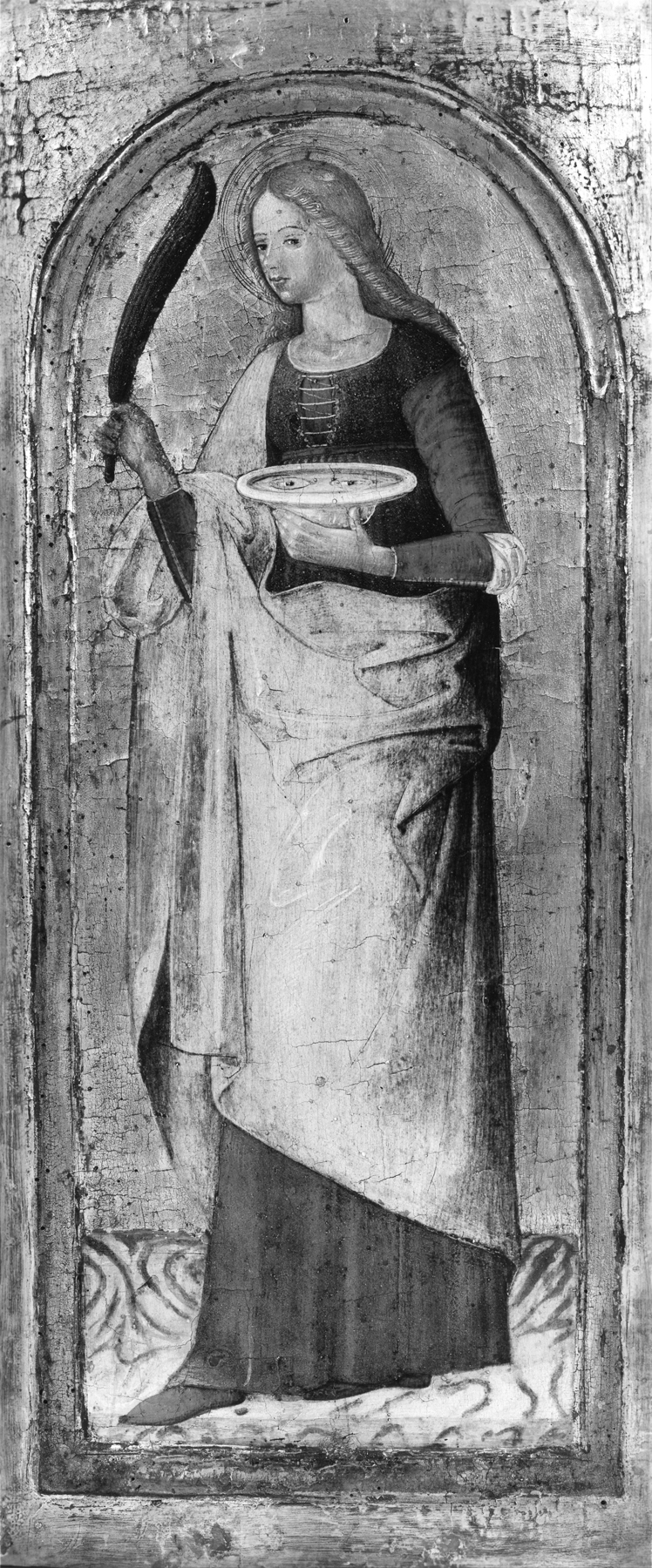St. Lucy
(Renaissance Europe )
Together with Walters 37.732, this small panel of Saint Lucy, patron saint of eyesight, comes from the “pilaster,” or frame, of an altarpiece (see the similar pilasters on Giovanni di Paolo’s altarpiece, Walters 37.554). The saint carries her typical attributes: a palm frond, indicating her status as a martyr, and a small platter with a pair of eyes. According to her legend, Saint Lucy’s eyes were coveted for their beauty, and she plucked them out and gave them to an unrelenting suitor who would not accept that she had already dedicated herself to God. The name Lucy also derives from the Latin word “luce,” meaning light, another explanation of the saint’s association with eyesight.
The figure's elongated proportions and sculptural modeling are typical traits of the painter Girolamo di Benvenuto, who was active primarily in his native city of Siena during the late 15th and early 16th century. The panel was probably painted in the late 1490s, when Girolamo was still working under the influence of his father and teacher, Benvenuto di Giovanni (1436-ca. 1518).
For another painting by Girolamo di Benvenuto at the Walters, see 37.743.
Provenance
Provenance (from the French provenir, 'to come from/forth') is the chronology of the ownership, custody, or location of a historical object. Learn more about provenance at the Walters.
Don Marcello Massarenti Collection, Rome [date and mode of acquisition unknown] [1897 catalogue: no. 335, as Bernardino da Perugia]; Henry Walters, Baltimore, 1902, by purchase; Walters Art Museum, 1931, by bequest.
Geographies
Italy, Siena (Place of Origin)
Measurements
Painted surface H: 18 x W: 6 11/16 in. (45.7 x 17 cm); Panel H including original gold framing: 21 1/4 x W: 8 15/16 x D: 1 in. (53.9 x 22.7 x 2.5 cm)
Credit Line
Acquired by Henry Walters with the Massarenti Collection, 1902
Location in Museum
Not on view
Accession Number
In libraries, galleries, museums, and archives, an accession number is a unique identifier assigned to each object in the collection.
In libraries, galleries, museums, and archives, an accession number is a unique identifier assigned to each object in the collection.
37.721



